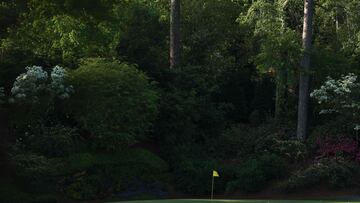The stories behind Masters at Augusta National: A hole-by-hole guide to the 18 names that make up the course
When Augusta National was created, more than 350 varieties of plants were planted, and the names of the courses were given in honor of the plant life around.


Berckmans Nursery, also known as Fruitland, was the first large-scale horticultural nursery in the southeastern United States. Founded in 1858 in Augusta by Louis Mathieu Edouard Berckmans and his son Prosper Jules Alphonse Berckmans, the grounds later became the site of the Augusta National Golf Club.
#TheMasters Azalea DEEP DIVE ⛳️
— Tee Times (@TeeTimesPub) April 9, 2025
Keep an eye on the 13th hole (Azalea) this year. While it always plays a significant role in the tournament, it might be even more crucial this year.
It's no secret that Hurricane Helene altered some of the sight lines on the course, with the… pic.twitter.com/O4XLrloUSO
Both of the Berckmans were natives of Belgium and immigrated to the United States during the 1850s. The younger, Prosper, was a university-educated horticulturist who received his degree in France. The Berckmans were also responsible for introducing wide varieties of fruits and ornamental plants to the South in their family-operated Fruitland Nurseries from 1858 to 1918. During this time, the Berckmans family introduced many plants, shrubs, and trees to the Southeast.
Prosper became recognized for raising new fruit varieties that are more suitable for growing in southern climates. He also molded or enhanced many types of peaches and eventually became known as the “Father of Peach Culture.”
Who designed Augusta National?
Today, the Augusta National Golf Club, home of the Masters Tournament, settles the former parcel of Fruitland Nurseries. When golf champion Bobby Jones and Clifford Roberts designed the course, the two sons of Prosper Berckman assisted them in the landscape design. Also, the Berckmans Family manor became the home of the Augusta National Clubhouse. Many of the plant varieties grown and improved by the Berckmans family still flourish at Augusta National as part of its developed landscape.
Hole #12 - Golden Bell at Augusta National Golf Club
— The Golf Dojo (@TheGolfDojo) March 26, 2025
Augusta, Georgia pic.twitter.com/SsKVCrOIWQ
Related stories
Louis Alphonse Berckmans, Prosper’s son, decided where to plant each of the 18 varieties, now the names of the holes at the golf course.
AUGUSTA NATIONAL HOLE NAMES
- Hole 1: Tea Olive - Par 4, 445 yards
- Hole 2: Pink Dogwood - Par 5, 575 yards
- Hole 3: Flowering Peach - Par 4, 350 yards
- Hole 4: Flowering Crab Apple - Par 3, 240 yards
- Hole 5: Magnolia - Par 4, 495 yards
- Hole 6: Juniper - Par 3, 180 yards
- Hole 7: Pampas - Par 4, 450 yards
- Hole 8: Yellow Jasmine - Par 5, 570 yards
- Hole 9: Carolina Cherry - Par 4, 460 yards
- Hole 10: Camellia - Par 4, 495 yards
- Hole 11: White Dogwood - Par 4, 520 yards
- Hole 12: Golden Bell - Par 3, 155 yards
- Hole 13: Azalea - Par 5, 545 yards
- Hole 14: Chinese Fir - Par 4, 440 yards
- Hole 15: Firethorn - Par 5, 550 yards
- Hole 16: Redbud - Par 3, 170 yards
- Hole 17: Nandia - Par 4, 440 yards
- Hole 18: Holly - Par 4, 465 yards

